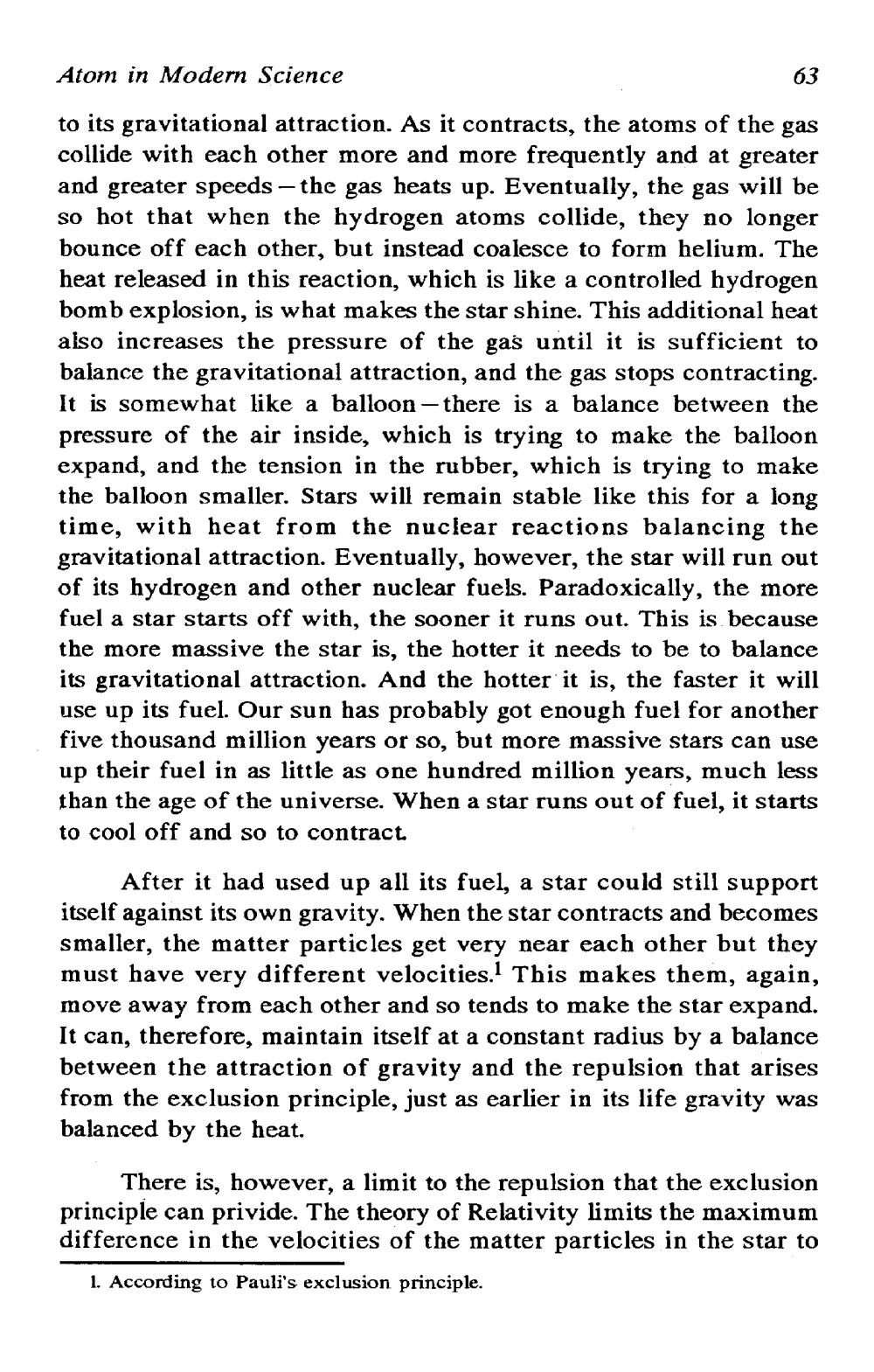________________
Atom in Modern Science
to its gravitational attraction. As it contracts, the atoms of the gas collide with each other more and more frequently and at greater and greater speeds – the gas heats up. Eventually, the gas will be so hot that when the hydrogen atoms collide, they no longer bounce off each other, but instead coalesce to form helium. The heat released in this reaction, which is like a controlled hydrogen bomb explosion, is what makes the star shine. This additional heat also increases the pressure of the gas until it is sufficient to balance the gravitational attraction, and the gas stops contracting. It is somewhat like a balloon - there is a balance between the pressure of the air inside, which is trying to make the balloon expand, and the tension in the rubber, which is trying to make the balloon smaller. Stars will remain stable like this for a long time, with heat from the nuclear reactions balancing the gravitational attraction. Eventually, however, the star will run out of its hydrogen and other nuclear fuels. Paradoxically, the more fuel a star starts off with, the sooner it runs out. This is because the more massive the star is, the hotter it needs to be to balance its gravitational attraction. And the hotter it is, the faster it will use up its fuel. Our sun has probably got enough fuel for another five thousand million years or so, but more massive stars can use up their fuel in as little as one hundred million years, much less than the age of the universe. When a star runs out of fuel, it starts to cool off and so to contract
After it had used up all its fuel, a star could still support itself against its own gravity. When the star contracts and becomes smaller, the matter particles get very near each other but they must have very different velocities. This makes them, again, move away from each other and so tends to make the star expand. It can, therefore, maintain itself at a constant radius by a balance between the attraction of gravity and the repulsion that arises from the exclusion principle, just as earlier in its life gravity was balanced by the heat.
There is, however, a limit to the repulsion that the exclusion principle can privide. The theory of Relativity limits the maximum difference in the velocities of the matter particles in the star to
1. According to Pauli's exclusion principle.




